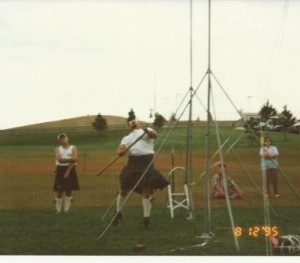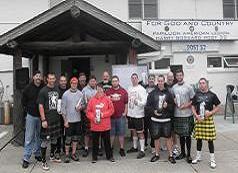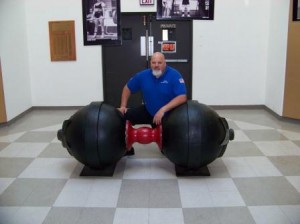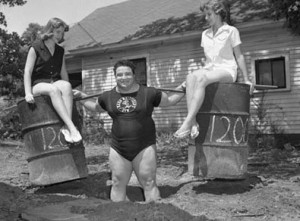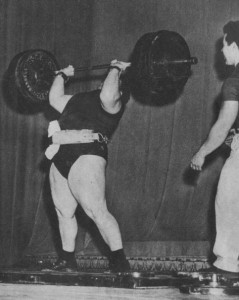The Day I Met Al Myers
by Thom Van Vleck
Al Myers and I have been friends for a LONG time. Well, at least 16 years anyways. I was digging through some old photos the other day and came across this gem. It was the Highlands Ranch Highland Games in 1995. My first competition ever in the Highland Games. I was competing in the Novice Division with 12 other throwers and got 2nd overall that day, winning 4 of 7 events outright. Who beat me? Brian Myers, Al’s brother!
Here’s what I recall that day. You have to understand first that most Highland Games has “classes” of throwers. There’s a C class (usually for beginners), B class, A class (top amateur) and Pro class (the best of the best). Also masters and women. Al was there in the pro class and won it that day, so he was a top pro thrower at the top of his game at that time. You also have to understand that the groups will rotate events all day, so that when one group is on the hammer, another might be on the caber so in between throws you can watch the other groups throw. I recall watching Al hit some big numbers that day. But most of all, the last event for him was the sheaf toss. And boy, did Al give a clinic!
The Sheaf is a 16lb simulated “hay” bale, usually rope or twine wrapped in a burlap bag. You use a pitch fork to launch it up and over a crossbar for height. Al was a 300lber then and had about 30lbs on me back then (how things have changed!). I was done with all my events and went over to watch the action. The bar kept going higher and higher and soon the only one left was Al. I remember my wife was wanting to go, but then I heard that Al would attempt a WORLD RECORD in the sheaf toss! I had to see that, but I also had been eyeing his attempts and really doubted he had that much in him. The sheaf standards were raised as high as they would go! In other words, the bar would go no higher and there was only one other time I’ve seen the standards “topped out” like that and the second time was just this year when Dan McKim, the current Pro National and World Champ, topped them out in Wichita. Al got set, began to swing the bar back and forth and with a mighty swing launched that sheaf up and over the bar. Al probably doesn’t remember this, but I went over and shook his hand and congratulated him….along with 5o other people!
I left that day not really sure if I’d ever compete in a highland games again, and not realizing that Al would some day be one of my best friends. I also didn’t realize that Al’s brother in law was somebody I had already competed against in the predecessor of the USAWA, Clark’s Odd lift meets. None other than Bob Burtzloff! It really is a small world. I have never forgotten that day because here was Al, at the top of the heap, the winner of the Pro class and me competing (and almost beating) his brother in the lowest group of all. But each time I talked to Al during the day, he was friendly, encouraging, and offered advice. A true sportsman! So, becoming his friend was easy because he was my kind of guy right from the start. It also sold me on highland games!
So, be nice to everyone. You never know when you’ll run into them again. And thanks Al, your encouragement that day set the standard for myself and brought me into a sport I truly love!
